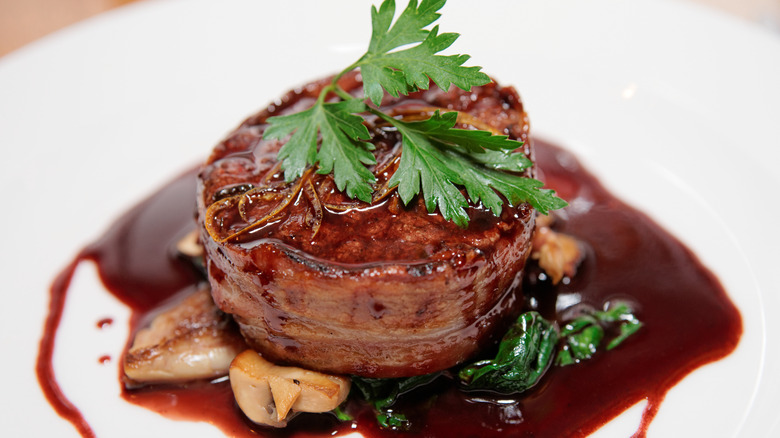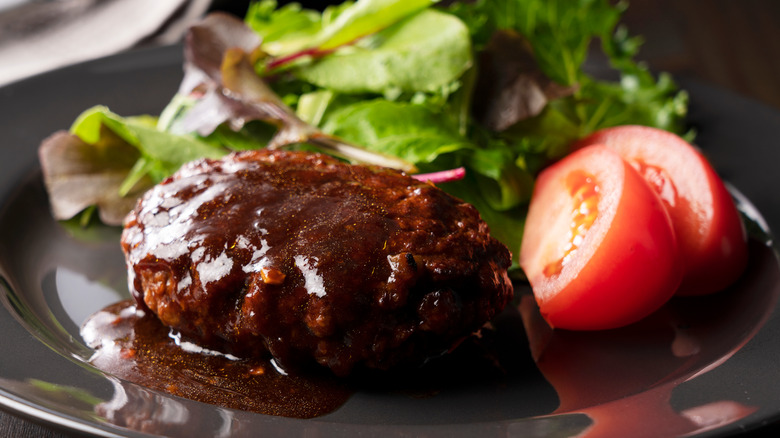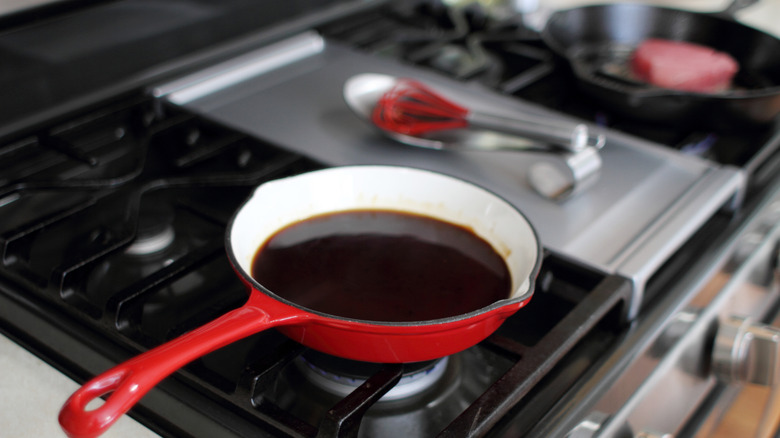What Makes Glace And Demi-Glace Different?
The tradition of classical French cooking is based on centuries of culinary history, reflecting the cultural, social, and historical influences of the country's rich gastronomic heritage (via Escoffier). Technique and precision are essential to classic French cooking, with dishes like cassoulet requiring slow stewing, attention to detail, and a mastery of basic culinary skills. But if there's one component of French dishes that truly sets the cuisine apart, it's the use of sauces such as glace and demi-glace.
They play a central role in classic French cuisine by adding depth and richness to dishes (via MasterClass). That's why chefs and home cooks hoping to master French cooking need to understand the difference between the two. While they both have a rich and intense flavor, they are quite different from one another in terms of taste, texture, and preparation. Understanding the difference between these two sauces and how to use them can take your cooking to the next level.
Different volumes and viscosities
Glace is a concentrated syrup made from a rich beef or chicken stock that has been reduced to about one-tenth of the initial volume (via MasterClass). The process of reduction intensifies the flavors of the stock, creating a thick, glossy sauce that's ideal for adding depth and richness to dishes. Glace is also used as a base for other sauces, such as bearnaise, hollandaise, and pan sauces.
Demi-glace, on the other hand, is a thicker sauce made from a reduction of equal parts beef or veal stock and espagnole sauce, a rich brown sauce made from browned vegetables, herbs, and flour (via More Than Gourmet). Demi-glace is typically used in dishes where a thicker, more complex sauce is desired, such as in braised meats, stews, and sauces for roasted meats.
Making glace and demi-glace can be a time-consuming process, but the result is a rich and flavorful sauce that's worth the effort. To make glace, start by making a strong beef or chicken stock (via Chicago Tribune). Once the stock has been reduced by boiling, strain it through a fine mesh sieve to remove any solids. Return the strained liquid to the pot and reduce it again until it has thickened to a syrupy consistency. To make demi-glace, simply combine the reduced beef or veal stock with an equal amount of espagnole sauce and reduce until thickened.
How to use each type of glace
Once you have made your glace or demi-glace, it can be stored in the refrigerator for up to two weeks or in the freezer for up to six months (via Saveur). When ready to use, simply heat the sauce over medium heat until it has reached the desired consistency.
When using glace or demi-glace in cooking, the Chicago Tribune reminds us that a little goes a long way; because the sauces are so intense in flavor, it is best to add them gradually, tasting as you go, to ensure that the desired flavor is achieved. They can be used to add depth and richness to gravies, sauces, and soups, or to enhance the flavors of braised meats and stews.
While they may require some time and effort to make, the end result is a rich and flavorful sauce that can elevate your dishes to new heights. Whether you are a seasoned chef or just starting out, understanding the difference between these two sauces and how to use them is a crucial step in mastering the art of cooking.


